Welcome to the Nakasendo, the ancient mountain road that connected Kyoto to Tokyo during the Edo period. The Nakasendo, which snakes through modern-day Nagano, Shiga, Saitama, Gunma, and Gifu prefectures, used to link sixty-nine post towns, some of which have been carefully preserved to this day.
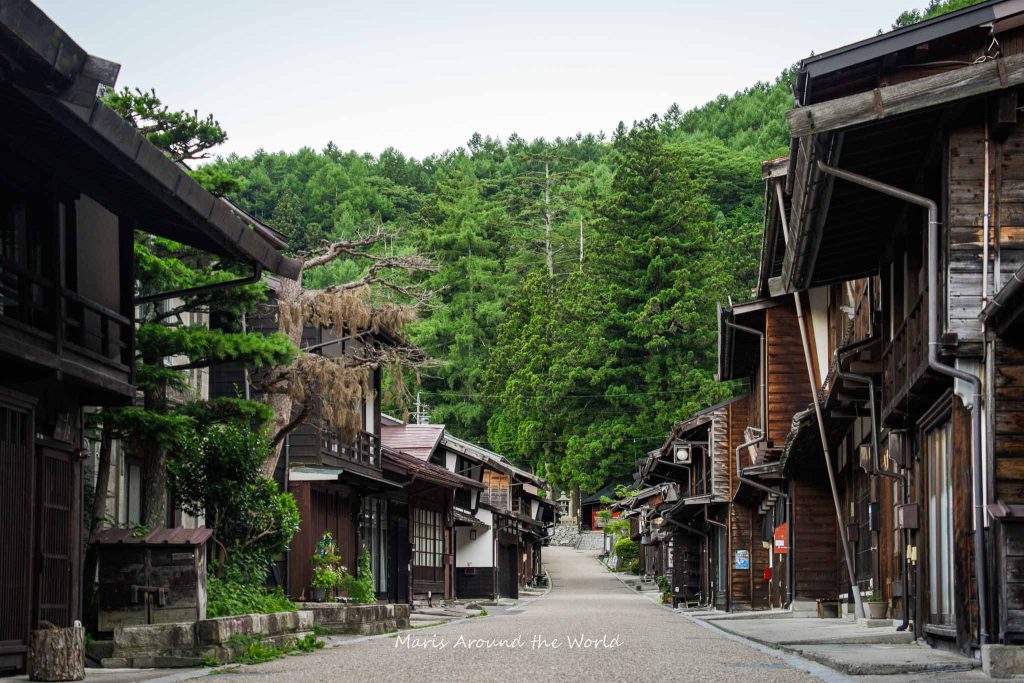
This post contains affiliate links, which means I may receive a commission if you purchase through my links, at no extra cost to you. Please read the full disclosure for more information.
Along this sacred route, travelers can step back in time, become one with nature, and witness aspects of Japanese life that have survived for hundreds of years.
I traveled along the Nakasendo a few years back when I made the trip between Tsumago and Magome. If you want to learn more about that trip (which was full of incredible scenery and a lovely guest house), check here!
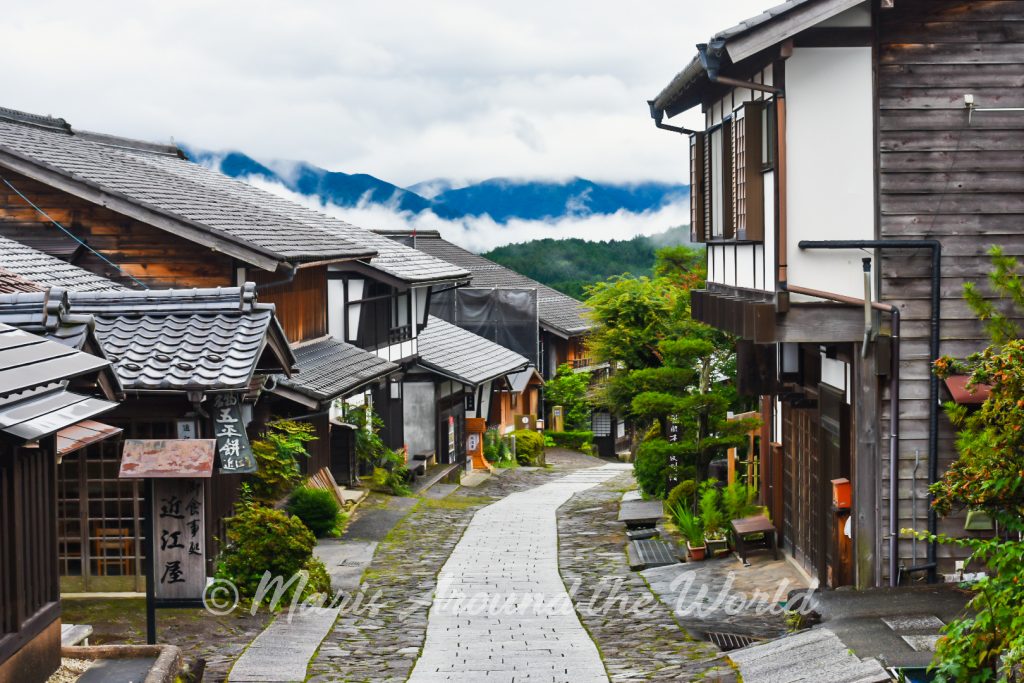
For this second trip on the Nakasendo, I’m visiting a new section, one that is far less known and traversed compared to Tsumago and Magome. This article focuses on the route between Yabuhara and Narai, two post towns in the northern part of the Kiso Valley.
Interested in learning about this area? Keep reading!
Table of Contents
- Vlog – Yabuhara to Narai
- Arriving in Narai
- Train to Yabuhara
- Hike to Narai
- Overnight in Narai
- Morning in Narai
- Final Thoughts
Vlog – Yabuhara to Narai
Come with me as we set foot on the Nakasendo Trail! We are walking from Yabuhara to Narai, the latter of which is a beautifully preserved post town in northern Kiso Valley.
Arriving in Narai
Since I had plans to stay overnight in Narai and was traveling by car, I headed to Narai first to drop off the vehicle and my luggage. From Matsumoto Station in the north, the drive is just under 1 hour. From Nagoya Station in the south, the drive is about 2.5 hours. You can also reach Narai (or Yabuhara) via train from the same stations.

When I arrived around noon, the small parking lot by Narai Station was already full. I was lucky to get a spot just as someone left, but otherwise, there was overflow parking nearby.
Since the train to Yabuhara comes very infrequently, I had some time to kill before the ride. Since it was around lunch time, I explored the streets of Narai and enjoyed a bowl of mushroom soba at Echigoya.

Many of the shops sell out during lunchtime, so don’t dawdle when it comes to filling your stomach. The soba was simple, but the broth was cold and so delicious!
Soba is one of the main dishes in this region, so make sure to try a bowl if you visit!
After lunch, I headed back to Narai Station, where I took the train to Yabuhara.
Train to Yabuhara
The small train arrived at Narai Station and 6 minutes later, dropped me off at Yabuhara Station.


It was a bit strange to ride the train knowing that I would be walking the entire way back. It was only a short ride, but walking would take much longer!
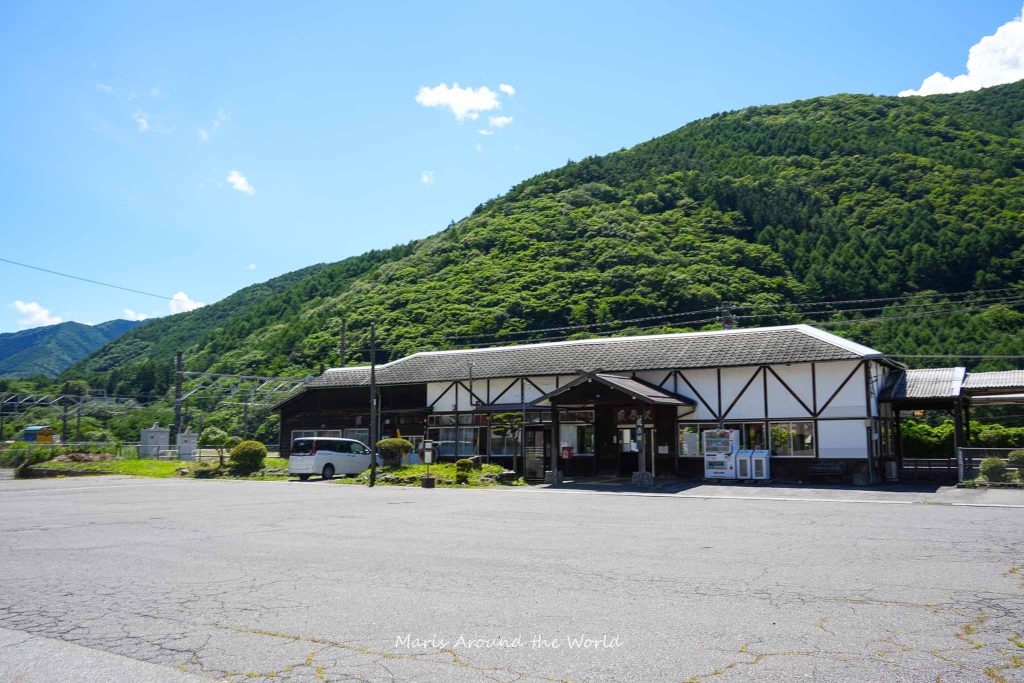
*The trains in this area come very infrequently, so check the timetables beforehand!
Hike to Narai
After getting off at Yabuhara Station, I picked up a sports drink from the vending machine outside the station, made a quick stop at the bathroom, checked the map, and was on my way.
Yabuhara is not a preserved post town, so don’t expect it to look like Narai or some of the other Nakasendo towns. Outside of the station, there was a large parking lot of cars, and beyond that, a few shops.
It’s time to walk back to the beautiful town of Narai!
Getting to the start of the Nakasendo road was a bit confusing, and I was surprised by the lack of signage. I expected there to be better guidance, but after a few confusing turns, I found my way.
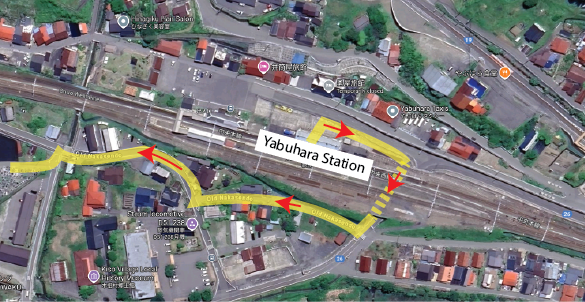
So that you don’t get lost, here’s how to get onto the trail:
- After exiting the station, head right.
- Take the path that leads down and turn right again to cross under the overpass.
- Take another right and you’ll be on the correct path – the old Nakasendo route!
- A few minutes on this trail and you’ll come to a large steam locomotive.
- Continue on the path that leads up the road on the right, where a bright green strip on the road is painted.
- Cross the small bridge, then take the path that leads in front of the cemetery on the left side.
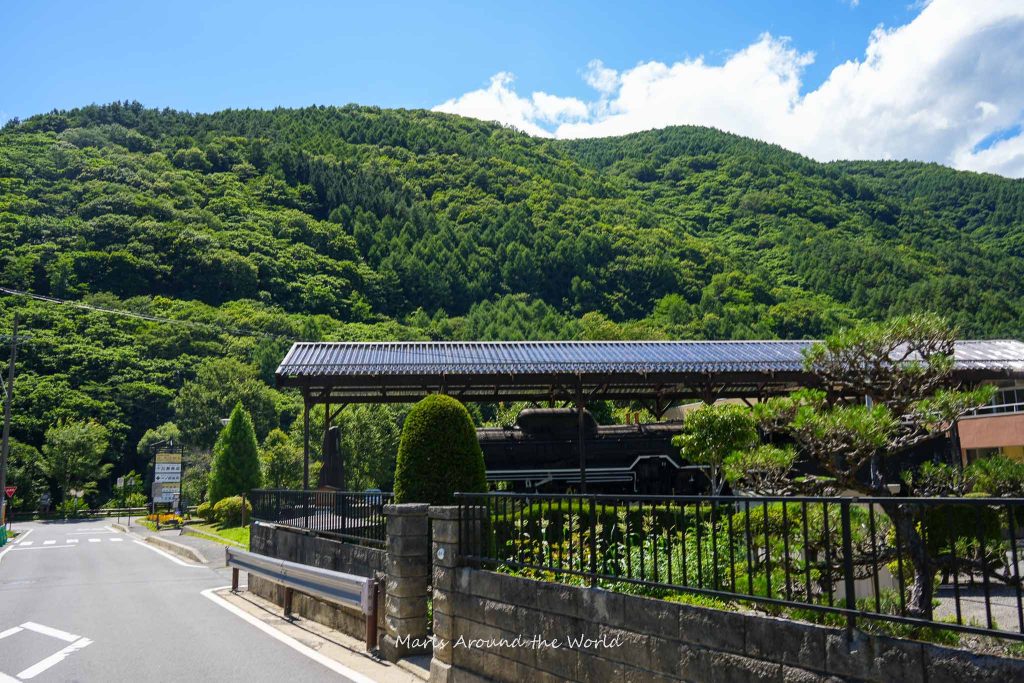
If these directions are still confusing, see the path in my video here.
I had beautiful, sunny weather during my hike – check out the perfectly white, poofy clouds and the bright green grass beside me!
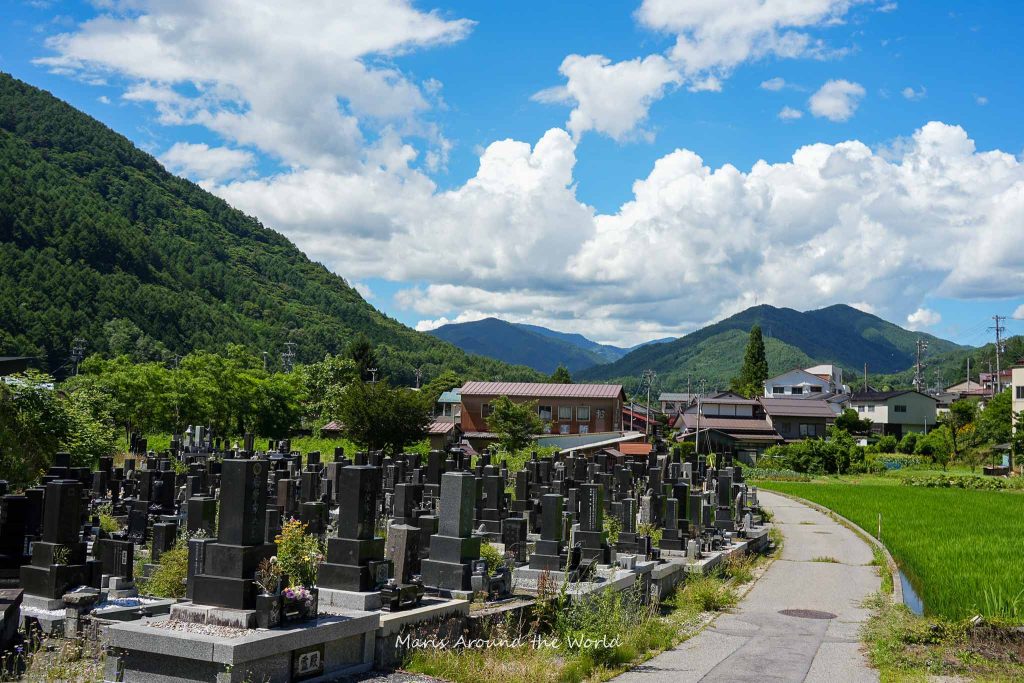
Since it was mid-afternoon in the summer and the first part of the hike out of Yabuhara was completely unshaded, it was a scorcher! Even with a hat, sunglasses, and sunscreen, I felt like a piece of toast.

After going under another overpass, I took a small detour to the right to reach the steps of Yabuhara Shrine. I didn’t make it all the way up to the shrine, but here is a picture of the torii gate at the entrance.

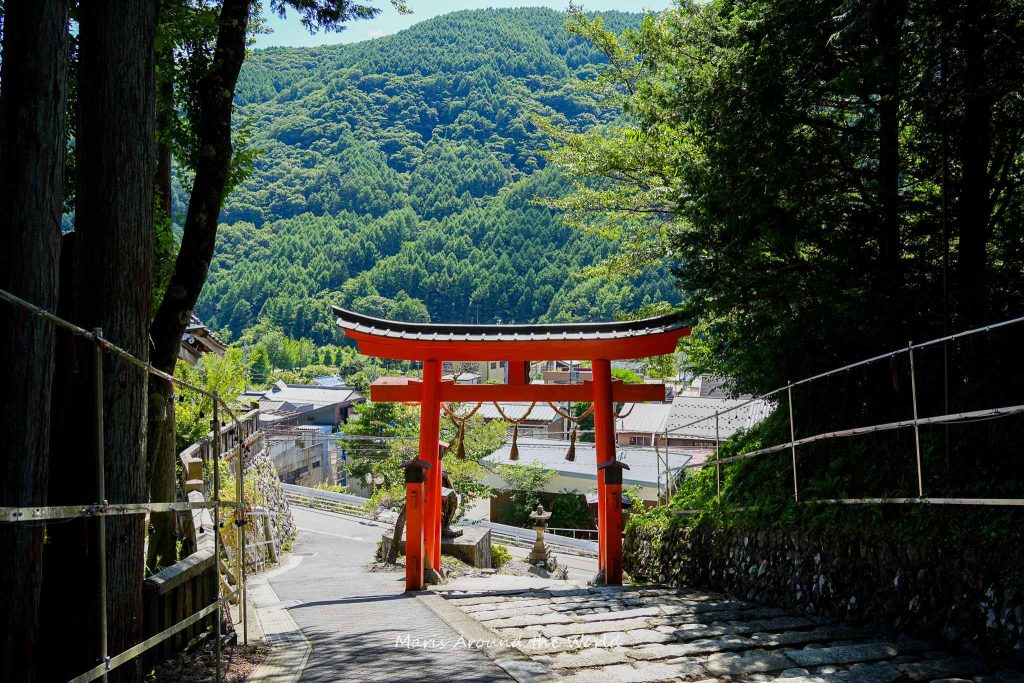
There was a rest stop along the road that had fresh drinking water for travelers. I happily filled my water bottle with the chilly water, wet my hat, and splashed my face – a much-needed relief from the heat.

A portion of the path was redirected to a special pedestrian section, so I followed the signs and continued along the road.
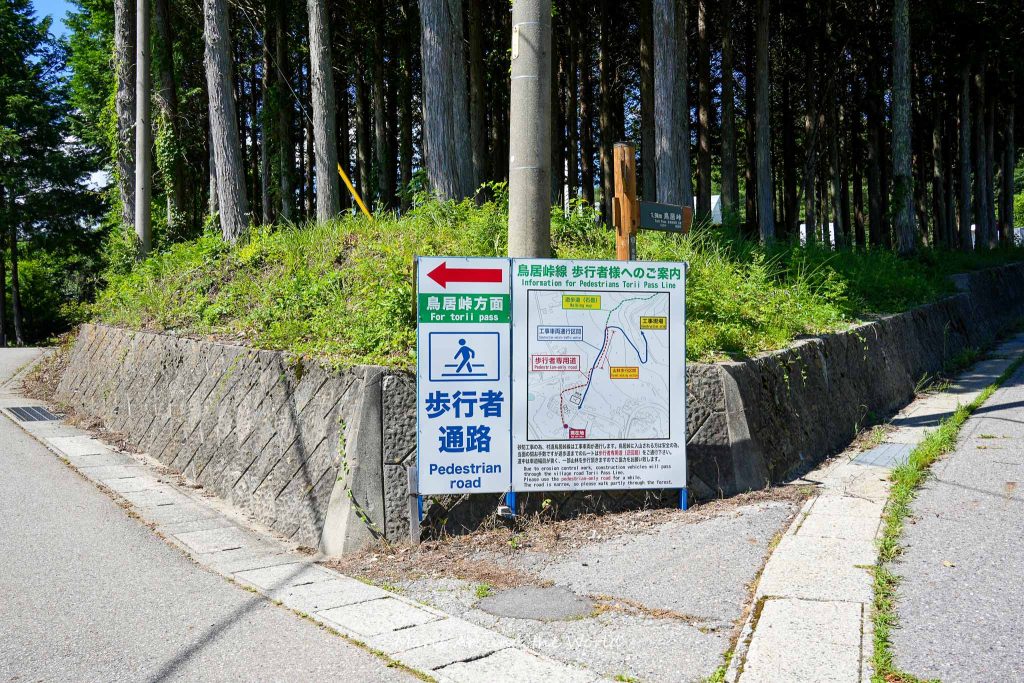
Soon, the surroundings changed, and I entered a forested area. The overhead shade was such a relief! At this point, a sign marked an elevation of 1,000 km.
A while later, I came to a cobblestoned section. I imagine this would be very slippery in the rain!

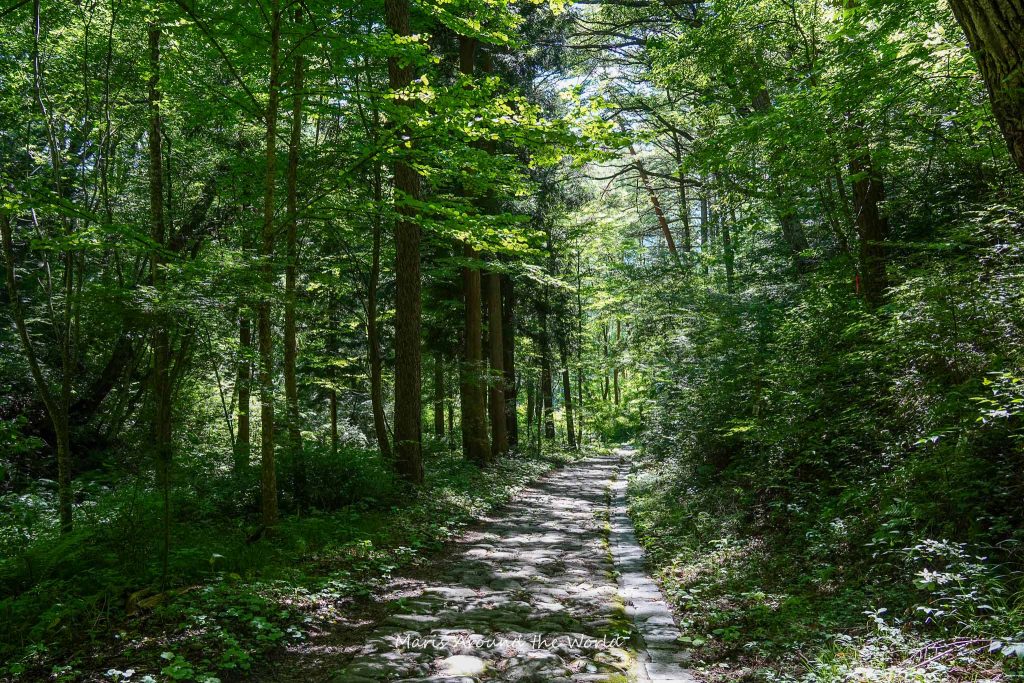
The walk from Yabuhara up to now had all been pretty much uphill. The climb continued once I reached the forest until the top of Torii Pass.
I didn’t realize that this was bear territory, but luckily, there were bear bells along the route that I could ring as I passed.

There was a clearing from which you could see Yabuhara in the distance. We’ve climbed so far already!

Two paths led up to Ondake Shrine, a steep flight of stairs or a gradual climb. I took the steep stairs without realizing the other path led to the same place.

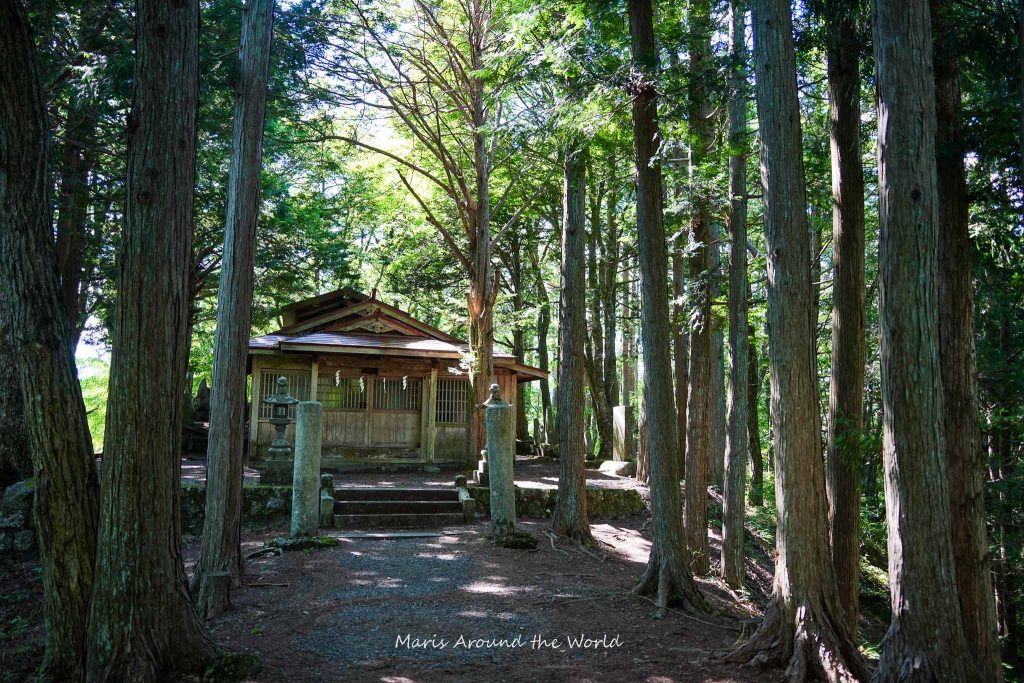
The shrine was beautiful and was a good place to take a rest.

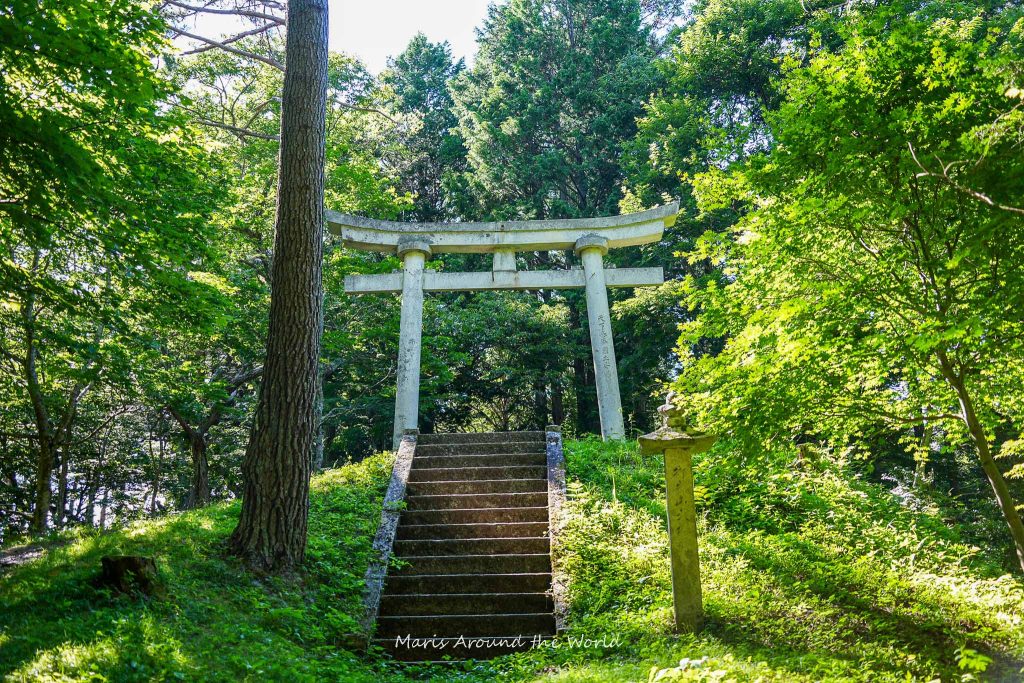
After Ondake Shrine, the second half of the hike was much easier.
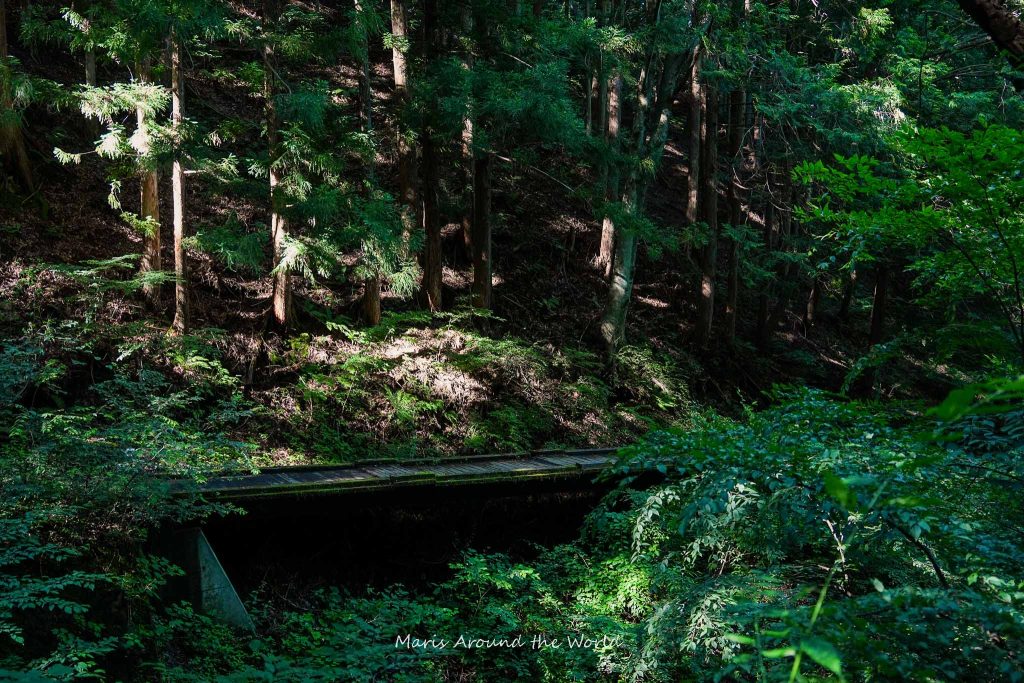
Look at the amazing shadows on this tree!
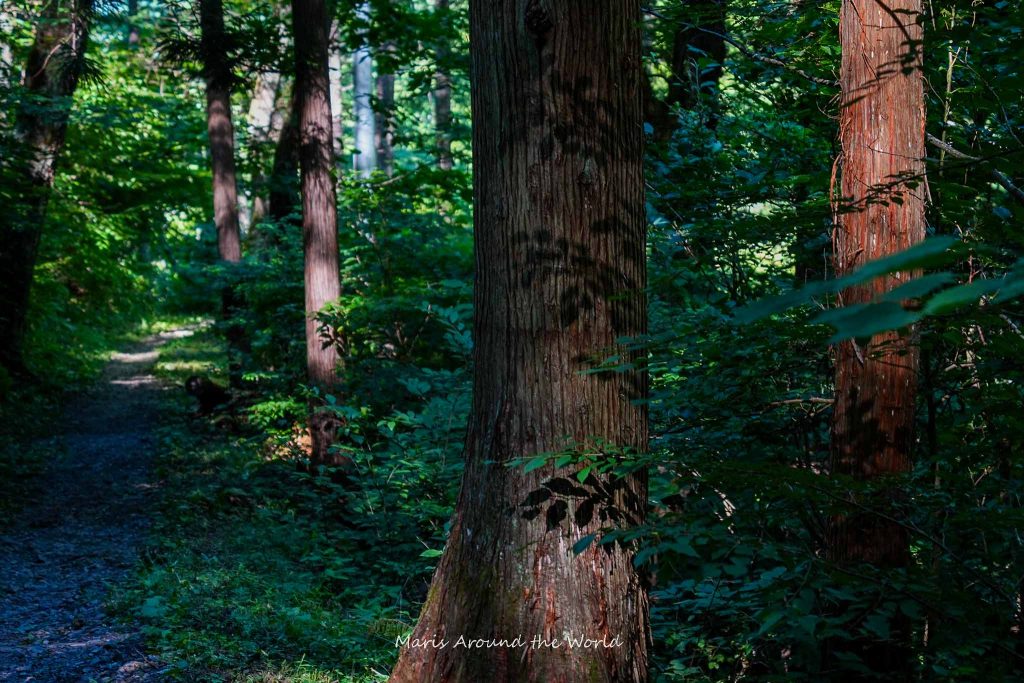
There was another cobblestoned section, and later, a lookout point to see Narai.
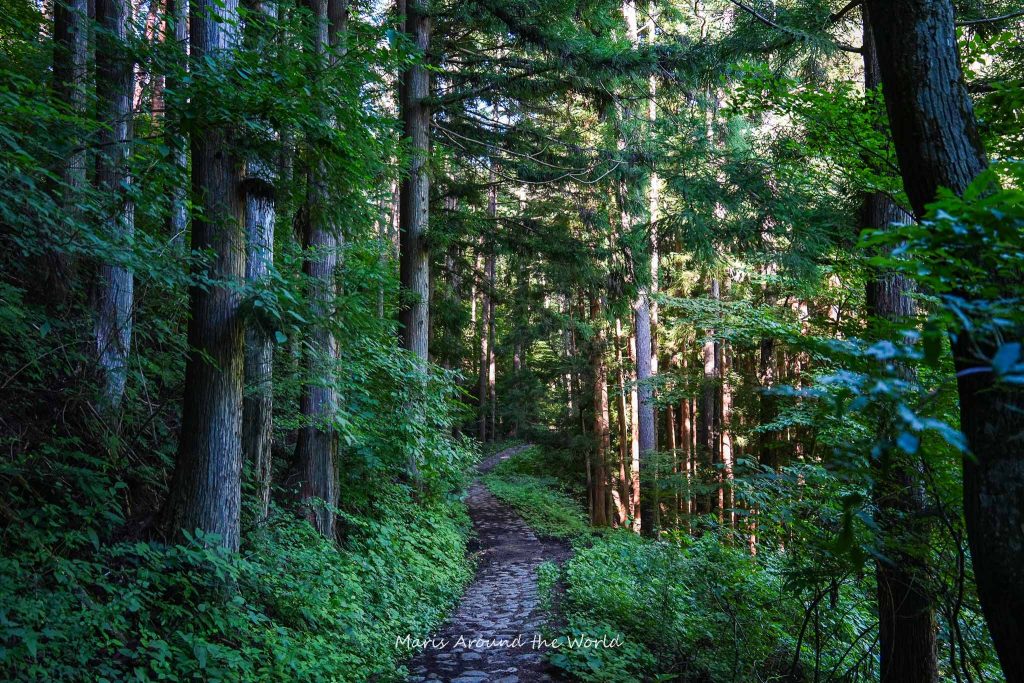

Finally out of the forest, I had made it to Narai!
The first thing I was greeted with was Shizume Shrine, which was surrounded by a canopy of tall trees.
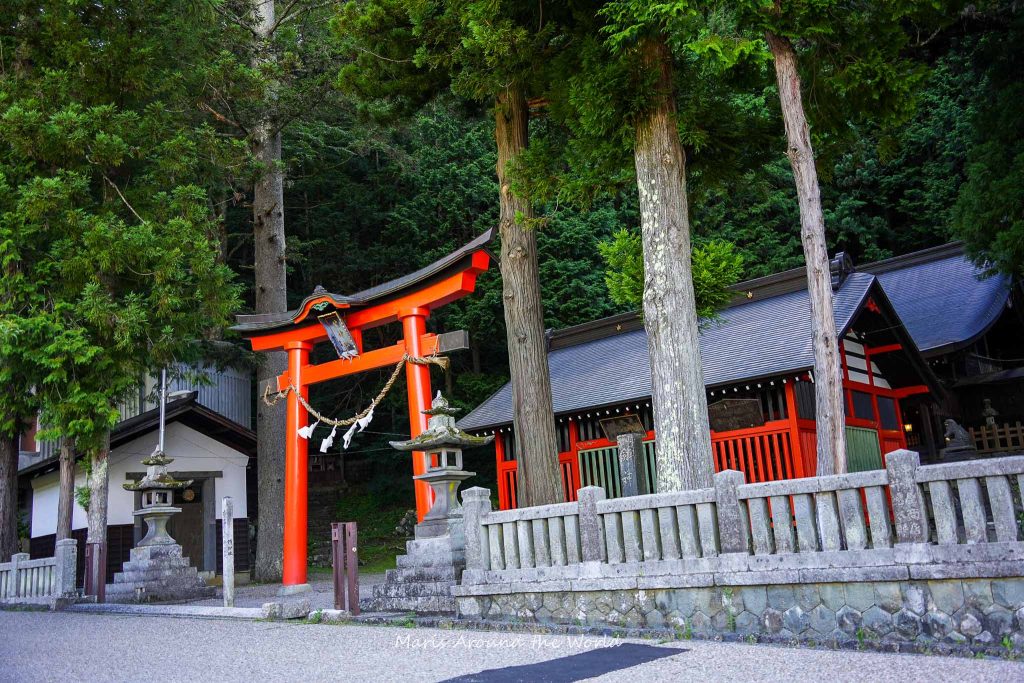
Continuing down the road, the road became lined with the iconic dark wooden buildings.
The wide streets paired with the old-style buildings and the backdrop of the mountains were a wonderful sight.
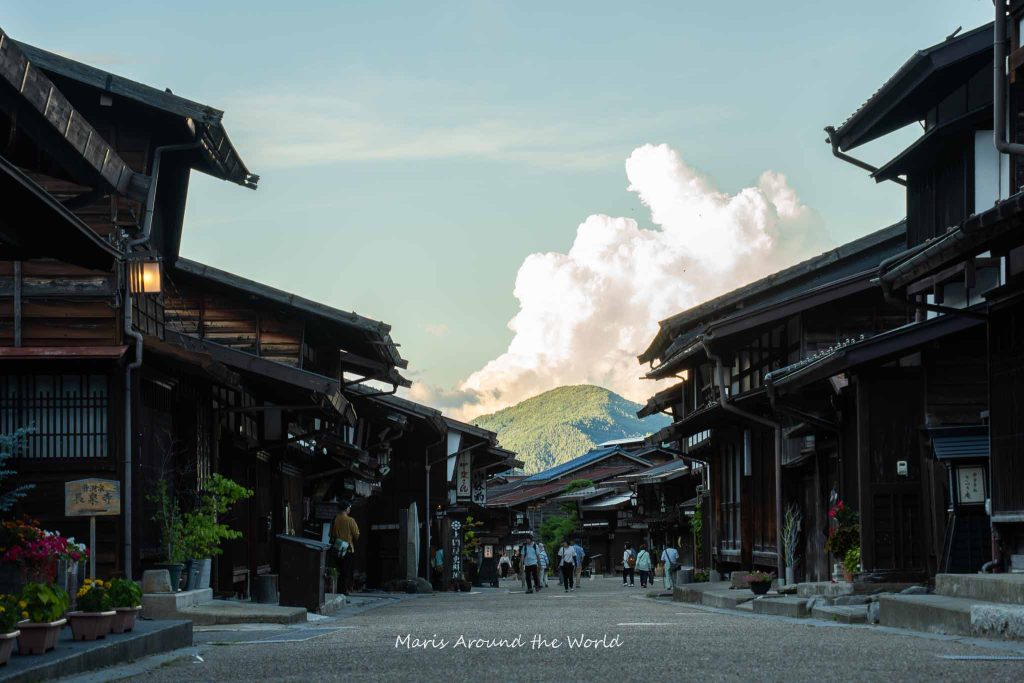

I picked up a neat postcard from a souvenir shop. Then made my way to check into my accommodations.
The trip from Yabuhara to Narai took about 3 hours.
Overnight Stay in Narai
Since I wanted to spend some extra time in Narai (especially in the evening and early morning with fewer people around), I planned to stay overnight.

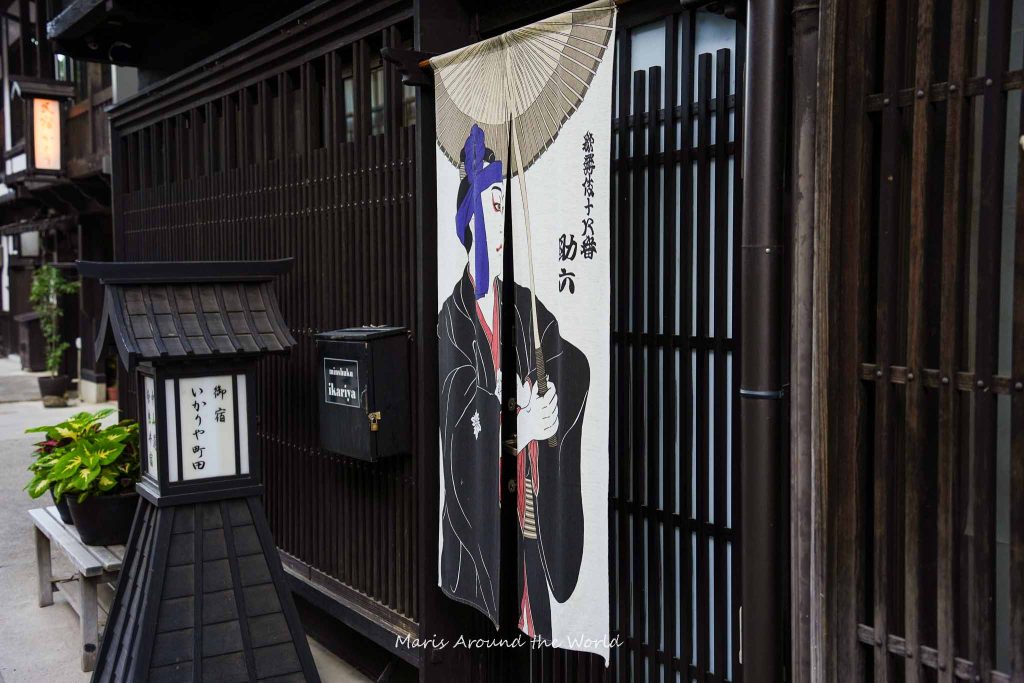
My accommodation was located on the main road at a place called Minshuku Ikariya Machida. Reservations were made by phone call only.
If you are looking for an easier way to book a stay in Narai, booking.com is a great way to go. BYAKU Narai is a very fancy hotel, also located on the main street. I wasn’t ready to make the splurge for a room this time, but the lodge looks incredible.
The building I stayed in was much larger than expected. It extended far back and had rooms in different sections of the building, both on the first and second floors.
For dinner, there was a large spread of home-cooked dishes, including sashimi, salt-grilled fish, sukiyaki, pickles, rice, and soup.

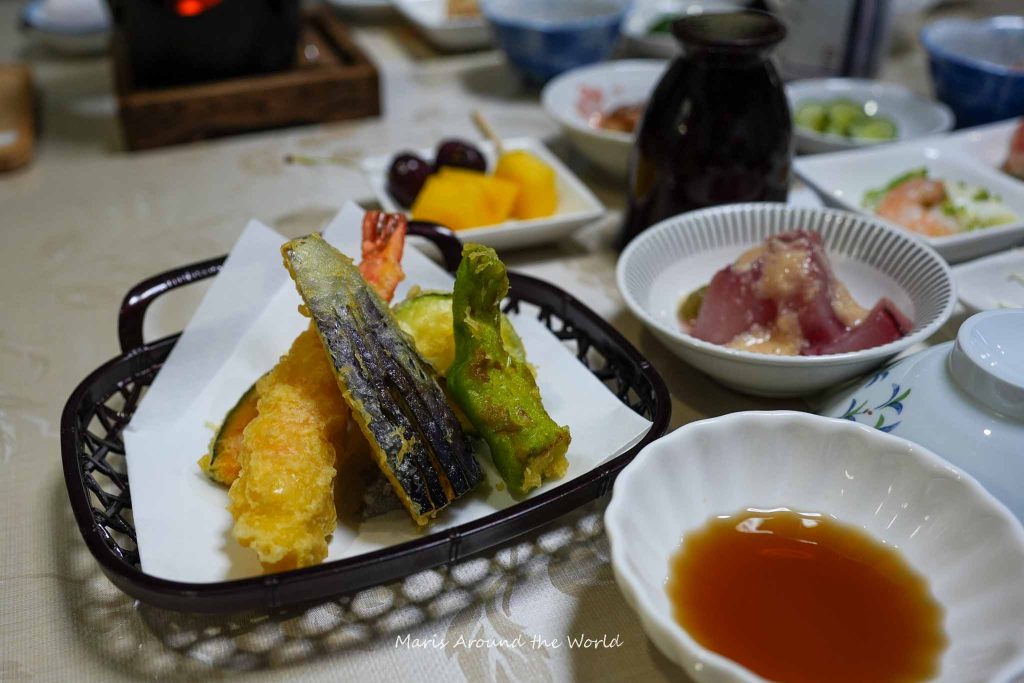
And of course, I got to take photos of Narai in the evening when there were almost no people on the street. It was a photographer’s dream – especially once the golden lights came on and lit up the dark buildings against the evening’s deep blue sky.
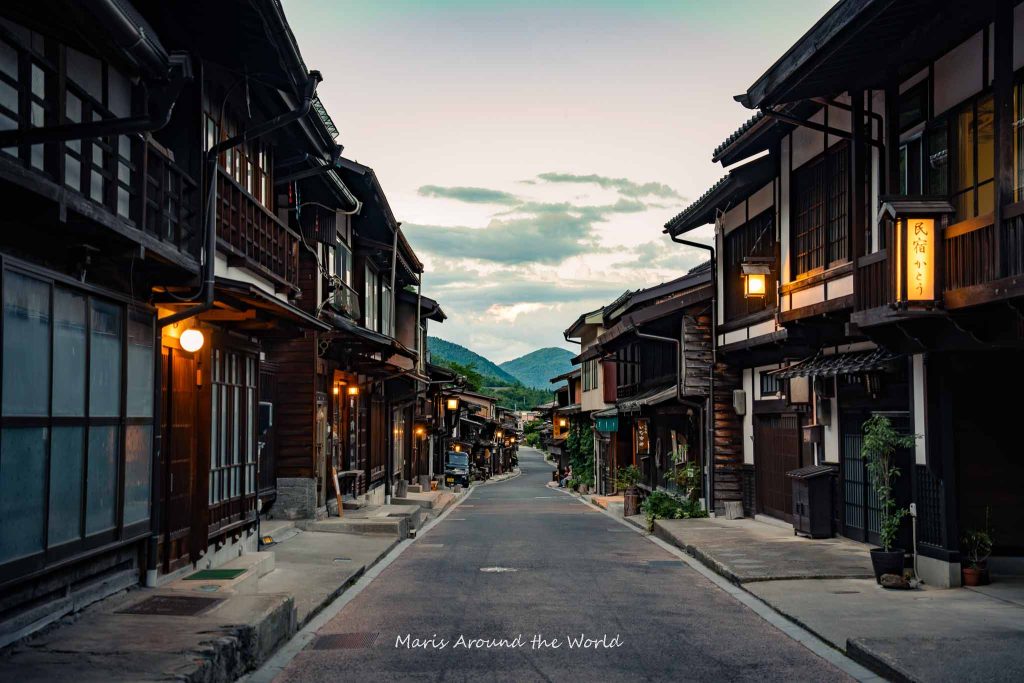
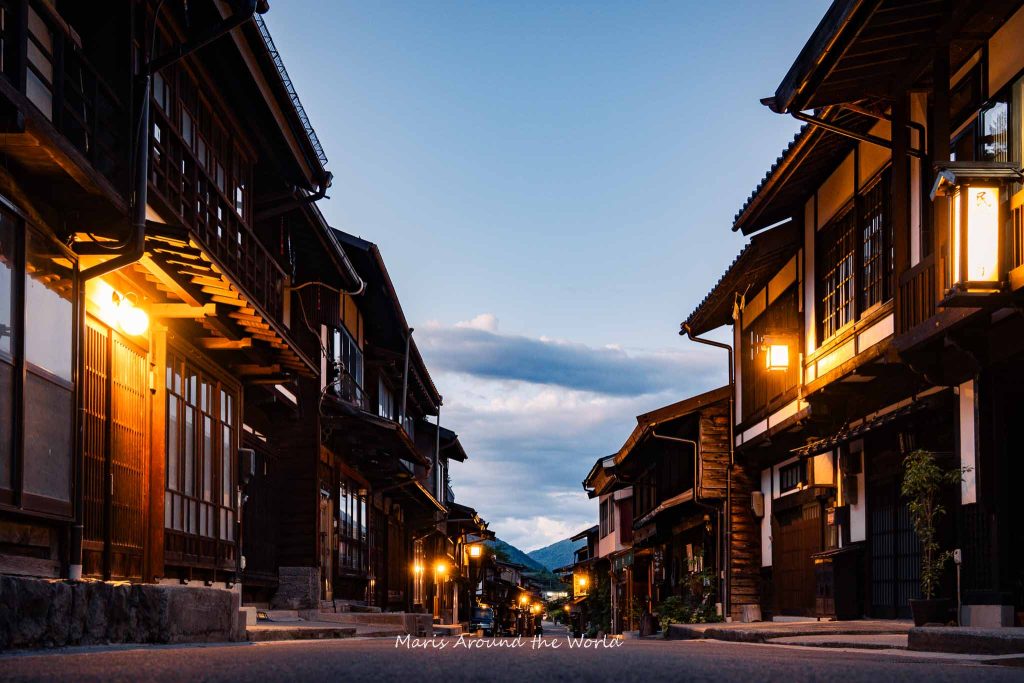
In the morning, we were treated to another filling meal, then checked out of the hotel.

Morning in Narai
Before heading out of Narai, I took the early morning to explore the rest of the town. There were many shrines and temples on the main street and on the road parallel to it. It got hot quickly, so soon I worked up a morning sweat.



Final Thoughts
And that’s all for my trip back to the Nakasendo! Narai and the surrounding atmosphere were definitely a highlight of the journey.

It’s nice that you can do a relatively quick hike from Yabuhara as well for those who like adding a bit of nature and activity to their travels.
While the path wasn’t as scenic as the one from Tsumago to Magome, it was much less traveled, which was a huge bonus.
While many people only come to the Nakasendo and the post towns to see the buildings and snap a photo, I believe that one of the best things is slowing down and spending the night and enjoying the food and local hospitality.
Until next time, happy trails!
Looking for other outdoor travels in Japan? Check out these blog posts!
